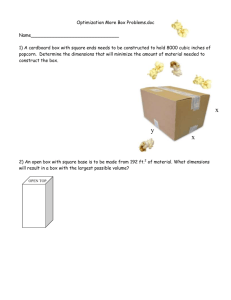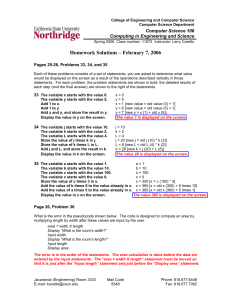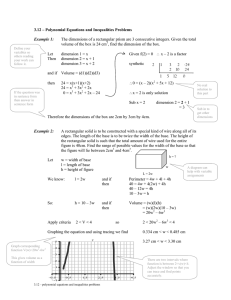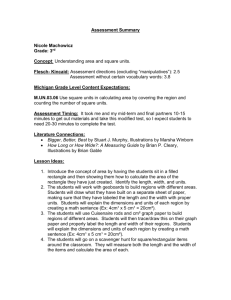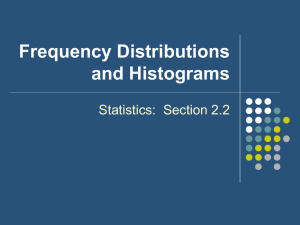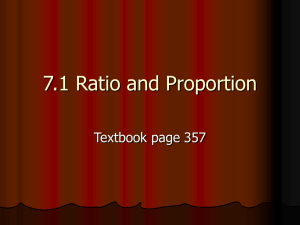Lab error analysis
advertisement
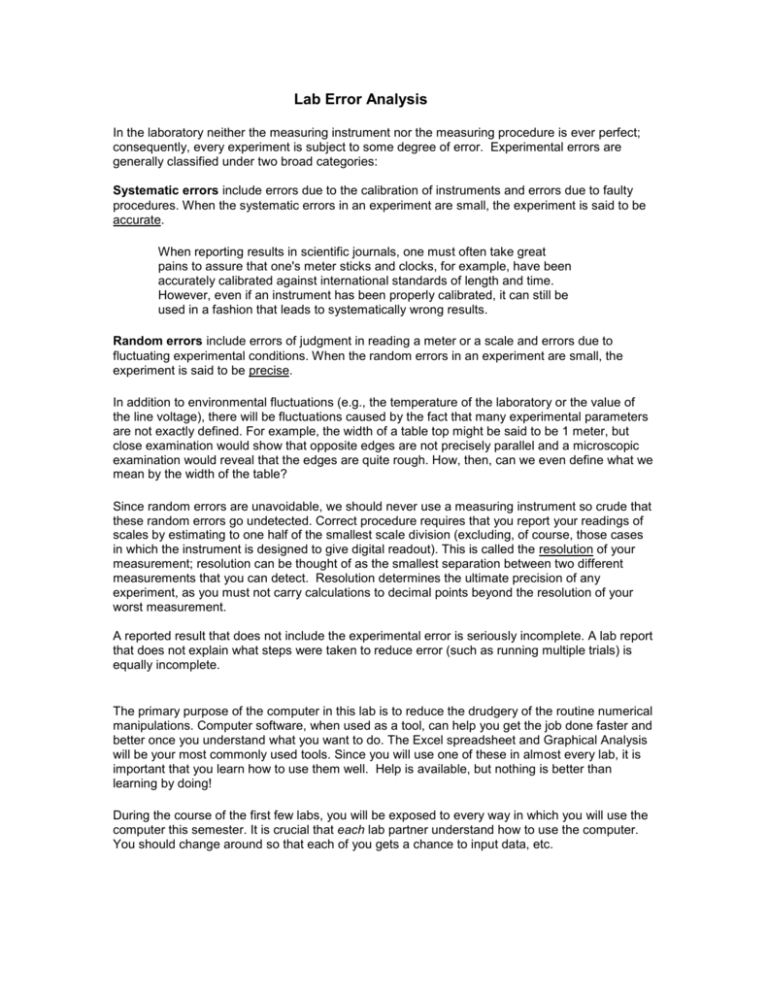
Lab Error Analysis In the laboratory neither the measuring instrument nor the measuring procedure is ever perfect; consequently, every experiment is subject to some degree of error. Experimental errors are generally classified under two broad categories: Systematic errors include errors due to the calibration of instruments and errors due to faulty procedures. When the systematic errors in an experiment are small, the experiment is said to be accurate. When reporting results in scientific journals, one must often take great pains to assure that one's meter sticks and clocks, for example, have been accurately calibrated against international standards of length and time. However, even if an instrument has been properly calibrated, it can still be used in a fashion that leads to systematically wrong results. Random errors include errors of judgment in reading a meter or a scale and errors due to fluctuating experimental conditions. When the random errors in an experiment are small, the experiment is said to be precise. In addition to environmental fluctuations (e.g., the temperature of the laboratory or the value of the line voltage), there will be fluctuations caused by the fact that many experimental parameters are not exactly defined. For example, the width of a table top might be said to be 1 meter, but close examination would show that opposite edges are not precisely parallel and a microscopic examination would reveal that the edges are quite rough. How, then, can we even define what we mean by the width of the table? Since random errors are unavoidable, we should never use a measuring instrument so crude that these random errors go undetected. Correct procedure requires that you report your readings of scales by estimating to one half of the smallest scale division (excluding, of course, those cases in which the instrument is designed to give digital readout). This is called the resolution of your measurement; resolution can be thought of as the smallest separation between two different measurements that you can detect. Resolution determines the ultimate precision of any experiment, as you must not carry calculations to decimal points beyond the resolution of your worst measurement. A reported result that does not include the experimental error is seriously incomplete. A lab report that does not explain what steps were taken to reduce error (such as running multiple trials) is equally incomplete. The primary purpose of the computer in this lab is to reduce the drudgery of the routine numerical manipulations. Computer software, when used as a tool, can help you get the job done faster and better once you understand what you want to do. The Excel spreadsheet and Graphical Analysis will be your most commonly used tools. Since you will use one of these in almost every lab, it is important that you learn how to use them well. Help is available, but nothing is better than learning by doing! During the course of the first few labs, you will be exposed to every way in which you will use the computer this semester. It is crucial that each lab partner understand how to use the computer. You should change around so that each of you gets a chance to input data, etc. one of the tasks of the experimentalist is to estimate the probability that someone who performs an apparently identical experiment will obtain a different result (measuring the width of the table top mentioned above would be a simple example because, among other things, "width" can't be defined precisely). Such estimates are based upon a mathematical model which fits the vast majority of cases - the Gaussian or "normal" distribution, which looks as follows: Caption: Frequency of occurrence of a given x. The function is characterized by two parameters: the mean m, which tells us where the peak of the curve falls along the x axis, and the standard deviation , which tells us how wide the curve is. We imagine that this curve is a good approximation to the one that would be obtained if we plotted the frequency of occurrence of a given value of x upon repeating a given measurement a large number of times. Design a new spreadsheet for this experiment. Use rows 1 and 2 for a title and other rows for column headings. Make sure you get enough information on the screen so that the numbers mean something. Text is as important as numbers. Use the ruler to measure the length (long dimension) of the block on the table. Use the Vernier caliper to measure the other dimension (the width). Do not measure the thickness. Do each measurement five times and compute the mean, the standard deviation and the standard error for each dimension. Report your results to 90 % confidence. What are some sources of random error in this procedure? Now calculate the area of the block. How do you think you would/should report a 90 % confidence interval for your area? (This will be one of the topics that we deal with in next week's lab.)

